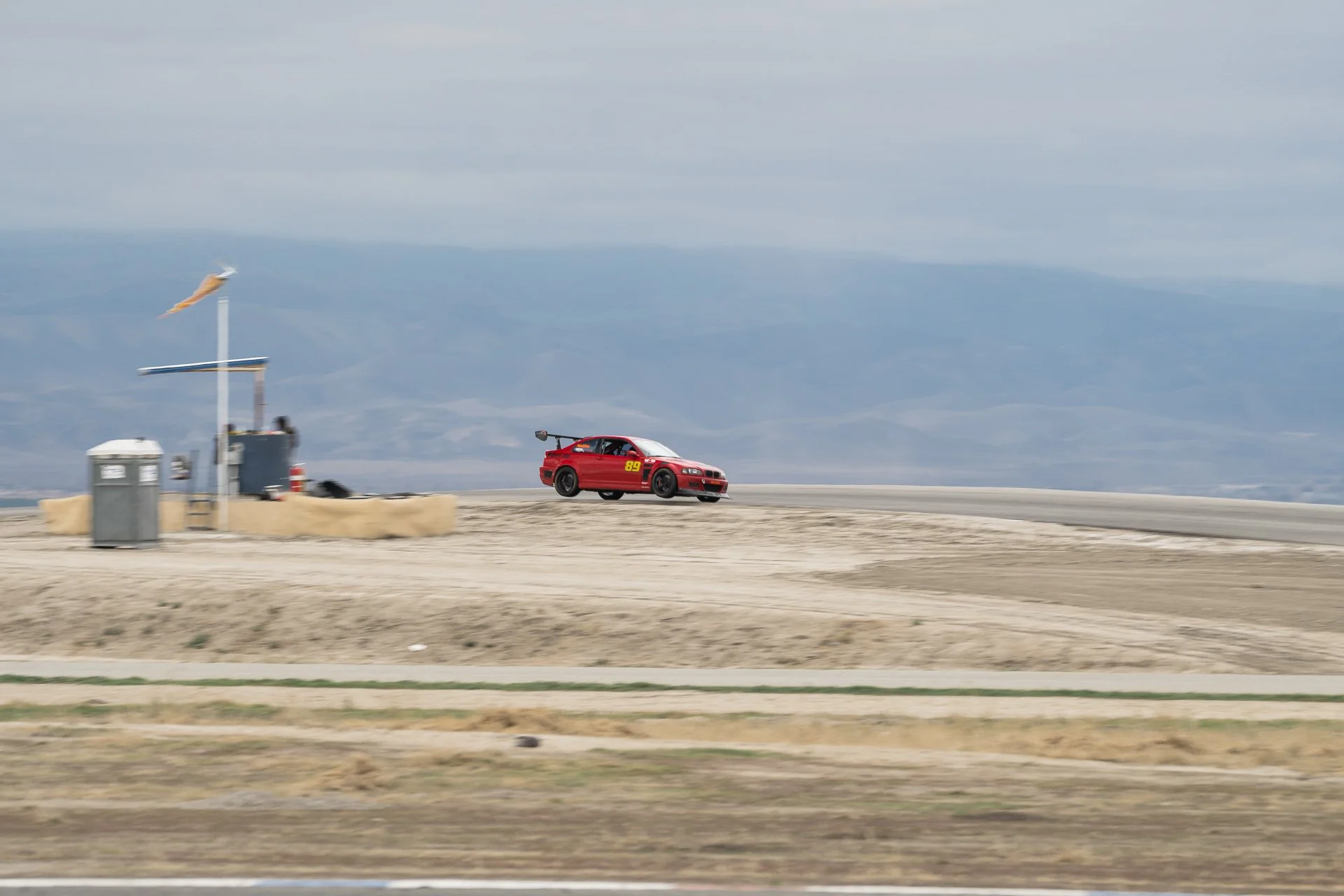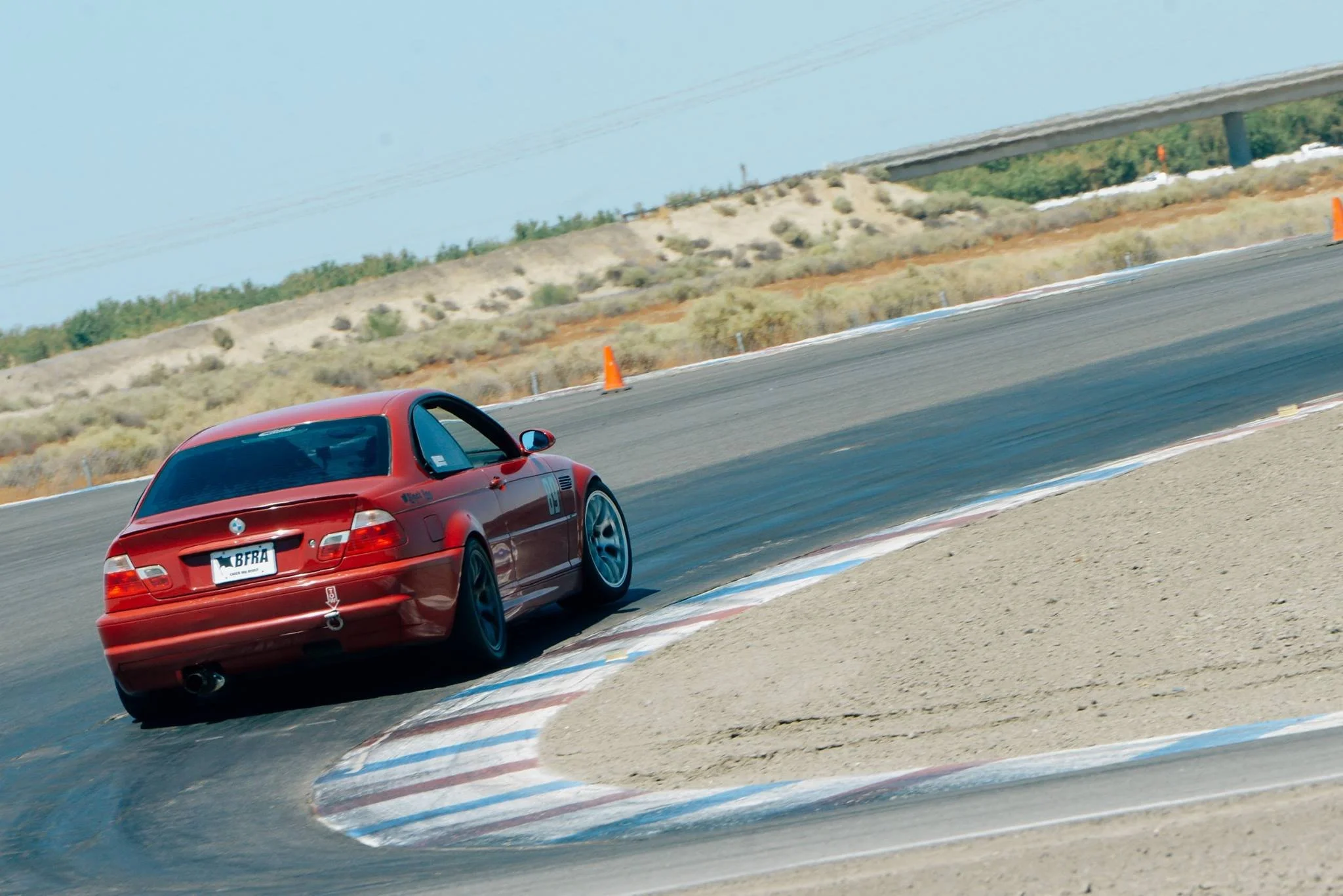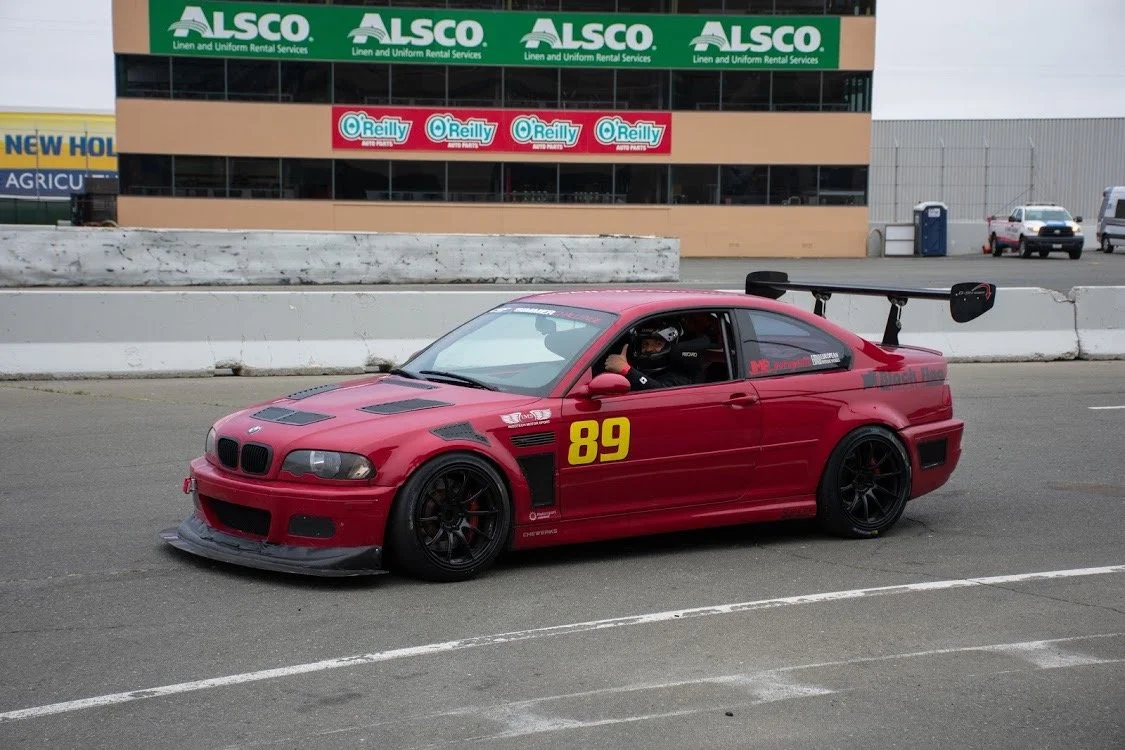Elie's E46 M3: Not Too Much, Not Too Little
For Elie Mansour, the E46 M3 is one of the most driver-friendly machines he’s ever driven—and he’s driven just about every trackday staple.
In 2003, Elie started tracking in the States with a fourth-generation Camaro, but to him, a man who grew up watching smaller vehicles hillclimbing in his native Lebanon, the Camaro seemed somewhat cumbersome.
“Everybody was driving the Subarus and Evos, S2000s, and a handful of E36s then.” His natural affinity for the capable E36 led him to buying one of his own, but its lack of power and regular maintenance left him wanting a little more. “For about six months, I considered swapping an S54 into my car, then my friend let me drive his E46 M3, and it just felt so much sturdier. When I factored in all the associated costs of swapping the new motor into the old car, I realized that I’d be better off buying an E46.”
Photo credit: Brett Smrz
Wisely, he avoided building one from the ground up. The Imola Red ‘02 he procured already had been partially stripped and fitted with an Autopower cage, big Brembo GT 355 brakes with Cobalt bads, and a set of Ground Control coilovers. As a precaution, he removed some of the failure points. Simple and effective, this platform needed nothing more than a set of solid mounts and bushings before Elie logged fifty events his first year with it.
Building Upon a Brilliant Foundation
Despite the running costs and the growing appetite for better parts, this busy first year didn’t tax him too much. The reliability of the car was astounding; changing the pads every dozen days and the oil about half as often. Then there was the ease of operation. “The E46 is one of the most driver-friendly cars I’ve ever owned; it has great headroom, great visibility, ergonomics, and it’s easier to drive than any other car at this performance level.”
Relatively simple operation, a moderate amount of weight, more that adequate power, a reasonably comfortably size, and—assuming one buys a good example—a manageable price. In so many ways, the E46 M3 is the ultimate Goldilocks car: not too much, but not too little.
Perhaps all this versatility came with one setback: weight. Being reasonably large and somewhat plush, the weight became more and more of an obvious hindrance the harder he pushed. Removing the sound deadening and carpet, then replacing the standard Getrag six-speed with a ZF five-speed allowed him to bring the weight down to 2,825 pounds.
It only followed that he would sharpen the chassis with whatever means readily available. After adding Ground Control swaybars, he sought out a set of revalved shocks to suit the lightened chassis. A knowledgeable friend practically gave him a set of used Motons that’d been collecting dust in a shop, but further inspection revealed the fronts were damaged beyond repair. At that stage, his friend admitted that he used JRZ parts to rebuild the other Motons he’d been given.
They shared a laugh, then took the expedient solution: using a set of JRZ RS Pro two-ways to replace the faulty fronts. With a little tweaking, he found the two brands to complement each other. “The two work well together, and the JRZs are so much easier to service than the Motons. It’s an unusual mix, but it was a no-brainer for us.”
With the footwork seriously improved, the slapped on a set of Pirelli DH crubs and began impressing the bystanders. His aggressive, tail-out driving style honed through years of messing around on gravel roads had to be tamed somewhat to go faster, but at least he was never limited by a lack of car control.
With the car handling well, he turned his attention to the powerplant. The S54 is, with the right sort of maintenance, a fairly robust motor that might get a little too much negative press. That said, it needs some uncorking before its sonorous scream can be fully appreciated. Along with an AFe intake, an eBay header, a Bimmerworld exhaust, and a BSpec tune, the motor made a healthy 323 horsepower at the rear wheels.
While the motor is stout, tracking can elevate temperatures to a worrying level. The iron block’s chances of overheating diminished greatly after he added a Bimmerworld motorsports thermostat and oil diverter, a CSF radiator, and a custom built electric fan, he’s been able to keep the iron block cool, even on sweltering summer days. “Don’t forget: a high viscosity oil is a must. During the summer months, I change the oil—usually 10W60—every three or four track days.”
With the motor fortified and the suspension sorted, the car was as dependable as any thoroughly thrashed track tool, really, and Elie prioritized seat time over all. Nearing his hundredth track day, he’d pushed the M3 to about as far as anyone was capable, and the few shortcomings in the car started to make themselves apparent.
Ready for a new challenge and a little more stability at speed, he decided to call on Trackspec Motorsports, who were then sponsoring him, and ask for a contribution in the form of a modest aero package.
The takeaway here was that he hadn’t simply reached for the biggest wing prematurely. He and Trackspeck went through a series of different combinations before settling on the G-Stream wing and their tegrid-constructed splitter, which was chosen for its durability. The result was, well, just watch the footage below to see the car in action:
Even Monkeys Fall From Trees
And then, perhaps as some sort of divine/cosmic payback for 180,000 miles of faultless operation, the motor coughed its last breath. He tucked the car away to the back corner of his garage and helped a few friends build their E46s with his two decades of knowledge,
It still sits in the corner, but another S54—again built for reliability—is almost finished. When the motor is implanted in its new home, he’ll address the two remaining flaws he’s noticed. “The OEM LSD acts like an open differential now; trying to get any traction out of Buttonwillow’s Turn 2 is futile.”
Besides that, it needs a few more safety modifications to move into the next realm of competition: NASA ST4. Trackspec Motorsports will likely prototype the cage, and along with a fire system, full window nets, and a restrictor to meet class restrictions, he should be ready for wheel-to-wheel. He’s got the car control and the courage, so the transition shouldn’t be too difficult.





